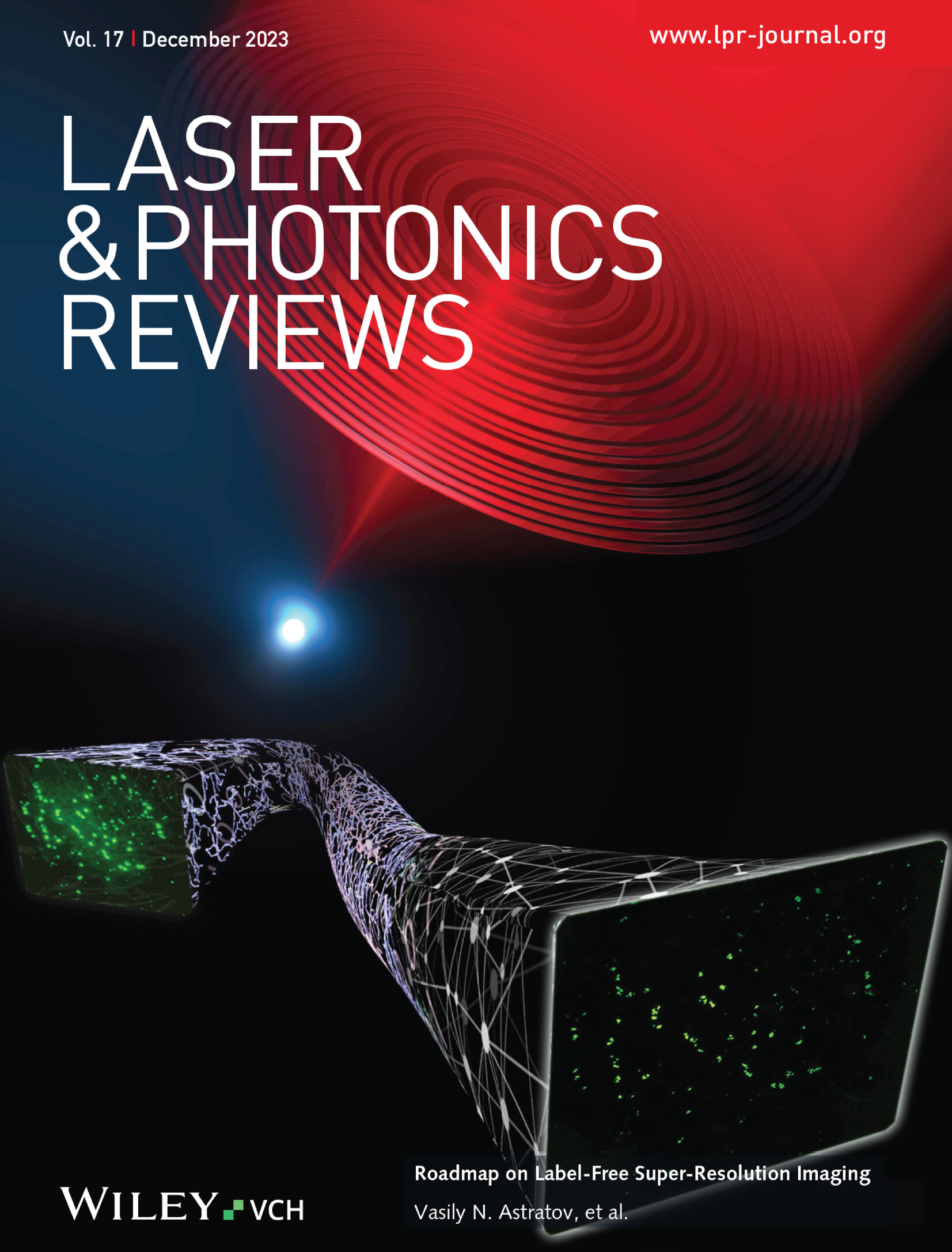Soliton Molecular Chains Induced by Cascaded Self‐Injection Trapping
IF 9.8
1区 物理与天体物理
Q1 OPTICS
引用次数: 0
Abstract
Soliton molecules (SMs), ranging from the simplest soliton pairs to complex multi‐soliton patterns, serve as versatile carriers for unveiling intricate nonlinear interactions and developing advanced ultrashort laser pulses. Owing to many‐body interactions, SMs composed of multiple solitons display more complex structures and dynamics. Here, a unique type of SMs, termed soliton molecular chains (SMCs), in a passively mode‐locked fiber laser is reported and their formation mechanism—the cascaded self‐injection trapping—is elucidated. The SMCs comprise equally spaced multi‐solitons, increasing progressively with pump strength, and exhibit temporal separation locking and relative phase correlating behaviors. Simulation results fully reproduce and interpret experimental observations, unveiling that the emerging solitons in SMCs are trapped at the local minima of the effective pinning potential in a cascade manner. Specifically, these potential wells originate from the interactions between the emerging solitons and the time‐delayed self‐injection pulses of the preceding soliton generated through an inherent sub‐cavity. Unlike SMs formed through long‐range interactions between solitons and background oscillations, this study demonstrates a novel mechanism that provides an alternative approach to synthesizing SMs with desired patterns by artificially introducing self‐injection pulses.

级联自注入诱捕诱导的孤子分子链
从最简单的孤子对到复杂的多孤子模式,孤子分子是揭示复杂非线性相互作用和发展先进超短激光脉冲的多功能载体。由于多体相互作用,由多个孤子组成的SMs具有更复杂的结构和动力学。本文报道了被动锁模光纤激光器中一种被称为孤子分子链(SMCs)的独特类型,并阐明了它们的形成机制——级联自注入陷阱。SMCs由等间距的多孤子组成,随着泵浦强度的增加而逐渐增加,并表现出时间分离锁定和相对相位相关行为。模拟结果完全再现和解释了实验观察结果,揭示了SMCs中出现的孤子以级联方式被困在有效钉住电位的局部最小值处。具体地说,这些势阱源于新出现的孤子与通过固有子腔产生的前一个孤子的时间延迟自注入脉冲之间的相互作用。与通过孤子和背景振荡之间的远距离相互作用形成的短脉冲不同,本研究展示了一种新的机制,通过人工引入自注入脉冲,提供了一种合成具有所需模式的短脉冲的替代方法。
本文章由计算机程序翻译,如有差异,请以英文原文为准。
求助全文
约1分钟内获得全文
求助全文
来源期刊
CiteScore
14.20
自引率
5.50%
发文量
314
审稿时长
2 months
期刊介绍:
Laser & Photonics Reviews is a reputable journal that publishes high-quality Reviews, original Research Articles, and Perspectives in the field of photonics and optics. It covers both theoretical and experimental aspects, including recent groundbreaking research, specific advancements, and innovative applications.
As evidence of its impact and recognition, Laser & Photonics Reviews boasts a remarkable 2022 Impact Factor of 11.0, according to the Journal Citation Reports from Clarivate Analytics (2023). Moreover, it holds impressive rankings in the InCites Journal Citation Reports: in 2021, it was ranked 6th out of 101 in the field of Optics, 15th out of 161 in Applied Physics, and 12th out of 69 in Condensed Matter Physics.
The journal uses the ISSN numbers 1863-8880 for print and 1863-8899 for online publications.

 求助内容:
求助内容: 应助结果提醒方式:
应助结果提醒方式:


